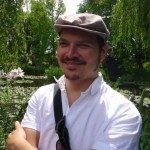Link to Pubmed [PMID] – 17348938
Evolution 2007 Feb;61(2):272-9
The existence of organ-specific human immunodeficiency virus type 1 (HIV-1) populations within infected hosts has been long lasting studied. Previous work established that population subdivision by organs occurs at the envelope env gene, but less is known about other genomic regions. Here, we used a population genetics approach to detect organ compartmentalization in proviral sequences of HIV-1 gag and pol genes. Significant population structure was found in pol (100% of cases) and gag (33%) pair-wise organ comparisons. The degree of compartmentalization positively correlated with the ratio of nonsynonymous to synonymous substitutions, and codons showing organ compartmentalization were more likely to be under significantly positive selection. This suggests that HIV-1 populations dynamically adapt to locally variable intra-host environments. In the case of pol gene, differential penetration of antiretroviral drugs might account for the observed pattern, whereas for gag gene, local selective pressures remain unexplored.
